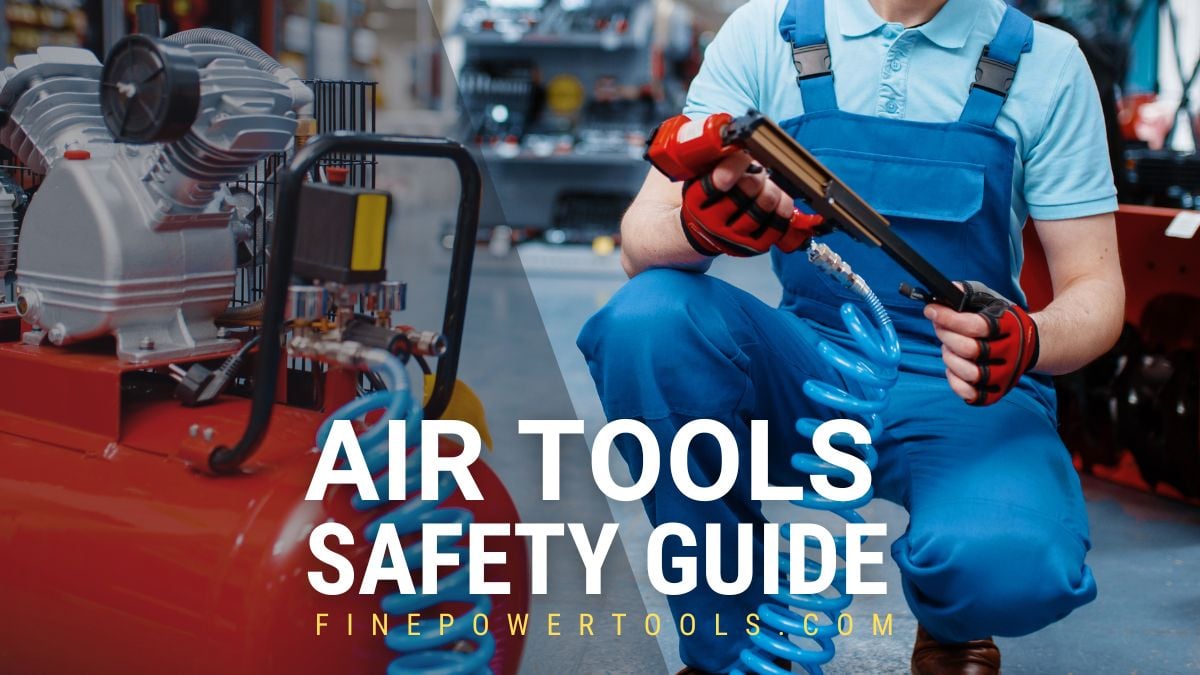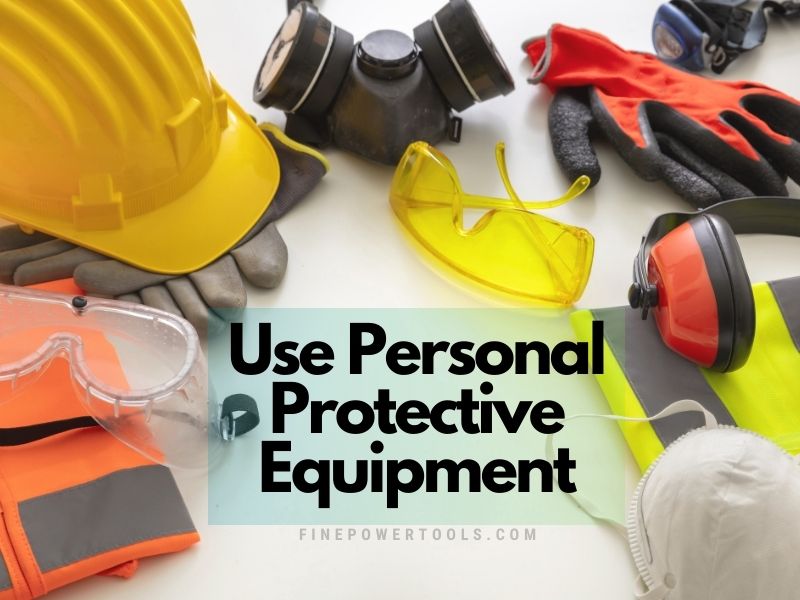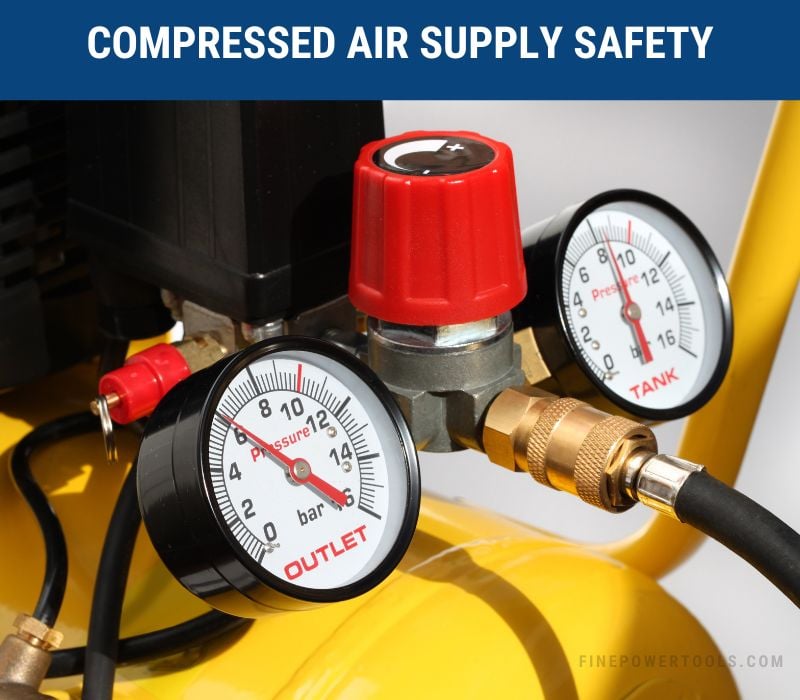
Pneumatic tools are great and make DIY and professional tasks easier every day. However, when not used carefully, they can become really dangerous.
In this article, I will share my experience after working with them for over 20 years.
Let’s get started!
I want to start this article by sharing something that is part of human nature and is statistically proven.
The more familiar we get with an activity, the more we are prone to become overconfident.
That’s why, even if you have been using power tools for years, it’s important to take some time to read your tools’ instructions and be conscious of the dangers involved with them to avoid making mistakes that could result in severe injuries or worse.
Pneumatic Tools’ Safety Hazards
The average pneumatic tool operates at high pressures, can have multiple exposed moving parts, and is powerful and fast. Being conscious of what can go wrong helps to understand the risks associated with these tools and what measures can be taken to prevent them.
Nail guns, riveters, and staplers are always feared because they can throw sharp objects really fast, but using a drill or a saw without adequate protection can also be harmful.
Noise
Bear in mind that pneumatic tools generate noise levels over the recommended PEL (permissible exposure levels), especially when working for extended periods, in closed environments, or in shops where multiple tools are used at a time.
Vibration
Also, it’s important to remember that pneumatic tools may carry ergonomic hazards, including excessive or prolonged exposure to vibration.
It’s also important to be aware of mishaps, like accidental activation caused by defective equipment or human error, which can cause severe injury.
Each pneumatic tool has its own hazard; some are more dangerous than others. That’s why it’s always important to be aware of the potential dangers of the tools you will be using, including the compressor.
Now, let’s move to what precautions should be taken when using pneumatic tools to avoid injuries and make your experience enjoyable and safe.
21 Tips to Use Your Air Tool Safely
I will break this list into sections for easier reading so you can use it as a checklist.
General Safety Precautions
- Before using a new tool, read the user’s manual thoroughly and operate it following all the preventive measures listed by the manufacturer. Check the manual frequently to remember the safety guidelines and ensure safe operation.
- Wear proper Personal Protection Equipment (PPE), like safety glasses or goggles, hearing protection, and anti-vibration gloves when operating vibrating tools, etc.

- Don’t wear loose clothes, jewelry, and other garments that may get caught in the tool.
- Before using a new tool, give yourself time to learn to use it properly. Go from the easiest to the most complicated, and double-check everything before starting.
Also, take your time to adapt to the tool’s trigger sensibility and begin with lower pressures until you get familiar with the tool. - Never operate a pneumatic tool at a higher pressure than specified by the manufacturer.
- Keep your tools properly lubricated and clean, and perform preventive maintenance as shown in the instruction manual. This will help you keep your tool as good as new and to avoid accidents caused by poor maintenance.
- Never leave unused tools plugged into the air supply to prevent them from activating accidentally.
- Disconnect the tools before changing accessories, such as sockets and bits, and before servicing.
- Before swapping tools, ensure there’s no pressure left in the air hose. Never attempt to connect or disconnect a tool into a pressurized hose.
- Never use attachments other than those recommended by your tool’s manufacturer.
- When working with grinders and tools that produce flying debris, use protective shields or screens to protect objects and people from them.

Compressed Air Safety Tips
- Always read and follow the air compressor’s user manual before operation. Be aware of the maximum pressure ratings and follow all the safety and usage guidelines recommended by the manufacturer.
- When using an air hose with a diameter over ½ inch, install a safety valve at the compressor’s outlet to cut the airflow in case of hose damage.
This will prevent damage and/or injuries caused by high-pressure air from a cracked hose. - Use air hoses specifically made for use with compressed air. These hoses are reinforced and offer extra damage protection.
- Perform regular maintenance to the compressor and use filters to keep the system dry to prevent damaging the tools, which may lead to hazardous failures.
- Ensure the air hose is away from fire, heat, sharp edges, and chemicals that may cause physical damage.
- Always switch the air pressure off when not in use or when changing tools.
- Never grab a pneumatic tool by the hose, as this may damage or loosen it.
- Ensure hoses don’t obstruct people’s passages. If you can’t prevent it, ensure it’s not curled to avoid tripping dangers.
- Never point compressed air tools or hoses toward people.
- When using air blow guns, never use an air pressure exceeding 30 PSI.
Tools Specific Safety Tips
These are safety precautions that apply to specific types of air power tools.
Pneumatic Grinders
Use grinders featuring over-speed shut-off, auto balancers, and protective guards. When working with pneumatic angle grinders and cut-off tools, never remove the protective guards, even if you believe they might make your job easier; remember to prioritize your safety.
Use specific cutting discs for the material you are working with and rated for the RPM you will be using.
Air Impact Wrench
Add a few drops of air tool oil to lubricate and increase the longevity of the tool. Impact wrenches are noisy, and hence, I strongly recommend you wear ear protection.
Consider using impact wrenches with torque limiters for precise and safe torque control, especially when tightening fasteners or changing tires. Torque control helps prevent over-torquing and minimizes the risk of fasteners breaking, reducing the risk caused by debris.
Ensure that you use impact-rated sockets and that the sockets are fastened properly to prevent accidental detachment.
Pneumatic Drills
Use the proper drill bits for the material being drilled to prevent them from breaking or slipping, potentially causing injuries.
Ensure that drill bits are tightened securely before operation.
Air Ratchet
Ratchets are very useful in tight spaces and is often used in auto repair shops. When using this tool, make sure that the air hose is away from heat, sharp edges, and oils. This is a mistake I often find even experienced mechanics make.
Ensure sockets are in good shape and are securely fastened to prevent accidental detachment.
Air Chisel, Jackhammer, and Other Percussive Tools
Wearing safety glass is a must when working with demolition tools.
Use safety clips to secure chisels, hammers, and other accessories during operation, even if the tool’s retaining mechanism fails.
Wear an antivibration glove to reduce the impact of vibration on your hand.
Final Words
These are the fundamental precautions everyone should follow when using pneumatic tools.
Always check your tools and compressor’s user manuals to learn the specific manufacturer’s safety guidelines. No matter how small a job may be, accidents can happen anytime.
Always use the right personal protection equipment and follow the tool’s instructions to ensure you are always safe and protected.
References
- https://www.osha.gov/sites/default/files/publications/osha3080.pdf
- https://www.ccohs.ca/oshanswers/safety_haz/power_tools/pneumat.html
- https://www.osha.gov/sites/default/files/publications/osha3080.pdf

Dan Miller is a professional toolmaker with extensive experience in the metalworking and tooling industry.
An avid DIY enthusiast and passionate hobbyist woodworker, Dan shares his expert knowledge here.






